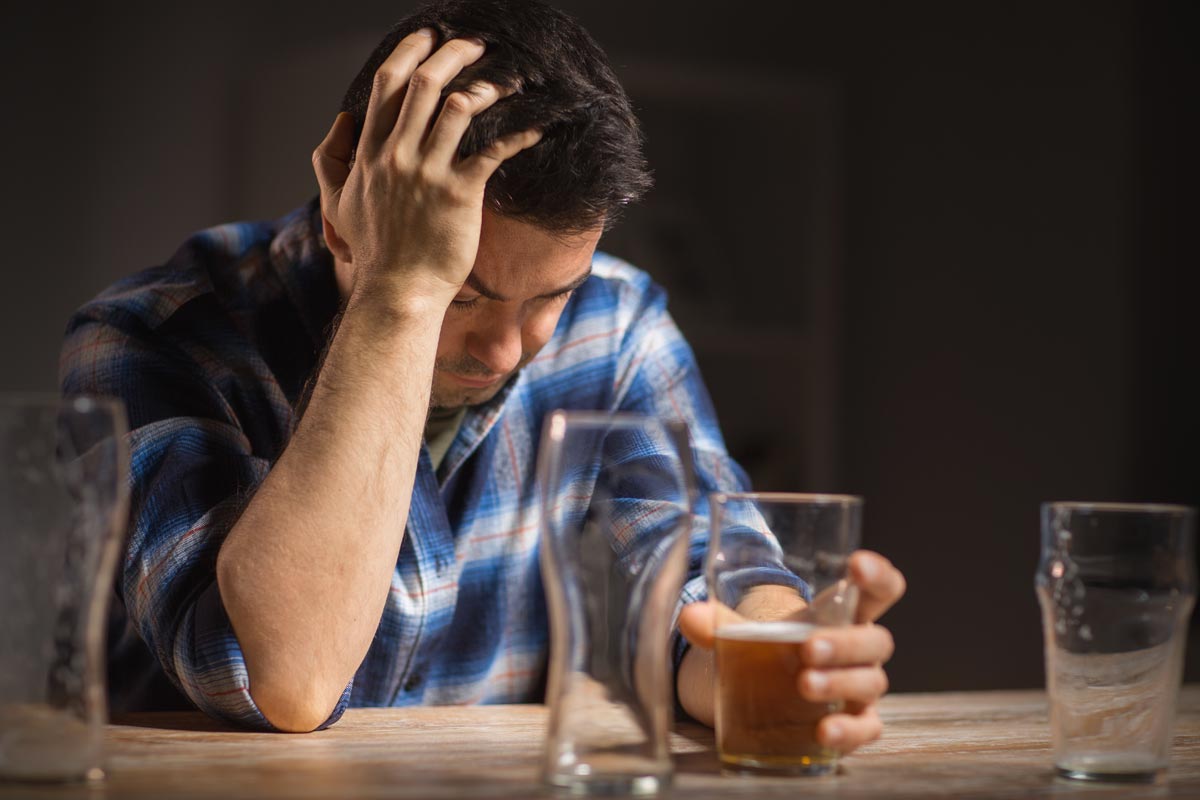Medical students have one of the highest rates of drug abuse, alcohol abuse, and addiction of any demographic in the United States.
Continue readingThe Link Between Vaping and Drug Addiction
The Link Between Vaping and Drug Addiction
 Vaping or vaporizing is an increasingly popular habit, in which liquid solutions, normally tobacco, are vaporized and inhaled as steam. Vaporizers were originally marketed as a safer and cleaner alternative to cigarettes and are today used by an estimated 9% of the U.S. population, or 35 million adults. This upswing in popularity is concerning, not just because vaporizers have only been on the market for a decade, but also because they consistently function as a sort of “gateway” drug, in that high vaporizer usage is associated with drug and alcohol usage. While this is correlation and not likely causation, easy access to large quantities of nicotine may play a role in forming addictions – which eventually lead to other addictions.
Vaping or vaporizing is an increasingly popular habit, in which liquid solutions, normally tobacco, are vaporized and inhaled as steam. Vaporizers were originally marketed as a safer and cleaner alternative to cigarettes and are today used by an estimated 9% of the U.S. population, or 35 million adults. This upswing in popularity is concerning, not just because vaporizers have only been on the market for a decade, but also because they consistently function as a sort of “gateway” drug, in that high vaporizer usage is associated with drug and alcohol usage. While this is correlation and not likely causation, easy access to large quantities of nicotine may play a role in forming addictions – which eventually lead to other addictions.
That’s especially critical as 1 in 5 high school students now uses a vaporizer, according to the CDC. With an estimated 1 in 5 middle school students doing the same, “vaping” is quickly being picked up by the populations who are most vulnerable to drug addiction and abuse.
What Are Vaporizers?
Vaporizers rapidly heat a liquid medium to turn it into a gas or steam. This liquid, which is normally sold in cartridges, can contain anything from no nicotine to extremely high doses of nicotine, equivalent to several cigarettes at once. For example, some are intended to contain a single cigarette of nicotine in a puff – supposedly with the intent of reducing the needed volume of “smoking”. Unfortunately, this efficiency rarely results in the intended effect. Instead, people consistently enjoy puffing on a vaporizer. In fact, following vaporizers being introduced to the market, cases of nicotine poisoning rose from an average of 1 per day to over 215 per day.
Vaporizer cartridges are also sold with flavor, marijuana, or other substances – meaning that someone using a vaporizer might be inhaling sugar, nicotine, or a stronger drug.
Vaporizers and Cannabis
Vaporizers are very commonly used to smoke marijuana, especially in the medical community. Vaporizing marijuana preserves more of the active ingredients than smoking – meaning that cannabis can be better dosed and better controlled. That’s while reducing contamination from tar and smoke, which can greatly reduce short-term lung pollution. At the same time, it makes cannabis products more accessible and more discrete for those abusing the drug – making it easier to pass off as tobacco or a flavored e-liquid.
So, vaporizers make it somewhat safer for people to use cannabis. At the same time, they introduce risks in the same manner they introduce risks for tobacco products. If it’s easy to inhale 20 inhales in a row – it’s easier to take significantly too much and to start having problems. For example, while marijuana has a very low addiction profile, about 1 in 5 to 1 in 10 users will start to show signs of addiction over time – with vaporizers, it’s much easier to escalate to the kinds of quantities that result in addiction.
Get Your Questions Answered
Do Vaporizers Lead to Heavier Drug Use?
 Many people use vaporizers for recreational usage. That can result in attempting to add other drugs, which are less safe. In fact, 85% of all vaporizer users occasionally put something other than tobacco or marijuana in their vaporizer. However, these incidents are experimental and incidental at most.
Many people use vaporizers for recreational usage. That can result in attempting to add other drugs, which are less safe. In fact, 85% of all vaporizer users occasionally put something other than tobacco or marijuana in their vaporizer. However, these incidents are experimental and incidental at most.
On the other hand, some meth and DMT users are actually switching to using vaporizers rather than glass pipes. For the most part, that’s a very good thing – considering glass pipes result in hundreds of injuries every year. Vaporizers are unlikely to explode or break from the heat. In addition, they’re less likely to burn hands or to start fires. Yet, most research shows that their usage is fairly incidental. Therefore, there is currently no evidence of widespread usage of vaporizers for heavier drugs.
Do Vaporizers Contribute to Addiction?
Vaporizers allow someone to have near-unlimited access to cannabis or nicotine, through a cartridge. For example, most nicotine cartridges contain anywhere from 400-600 doses of nicotine. A 1ml cartridge of “normal” rather than “strong” or “extra strength” e-liquid is normally equivalent to 3-7 cigarettes. A 3ml cartridge can equate to as many as 21 at normal strength, or as many as 70+ at extra strength. With nothing to stop you from going through that at any pace, there’s nothing to stop you from inhaling tobacco at a rate that would be difficult to impossible with traditional cigarettes.
That ability to quickly and easily get a hit of something, without regards to being indoors or out, and without the restrictions of cigarettes, can make it easier to become addicted. That’s especially true for those who already have a problem with tobacco or who have a history of relying on substances to get themselves through the day.
Eventually, vaporizers offer a lot of harm reduction over smoking cigarettes or joints. Without the smoke and tar, they reduce lung pollution. Often, that means it’s safer and easier for people to use the substances they want. However, vaporizers also result in risks for people who have poor impulse control or who have strong habits to puff and smoke. That can be especially dangerous for those with a long history of smoking or those with addictive personalities.
Vaporizers aren’t bad. However, if someone doesn’t’ smoke, it’s always better to avoid starting altogether. If you do smoke, it’s better to use quantity control when switching to vaporizers – because the amount of nicotine or cannabis you inhale can greatly increase when you switch to a cartridge. Buying smaller cartridges, only using a certain number of cartridges per week, etc. Keeping track of how much you’re smoking and when is important if you want to stay in control.
And, of course, people with a past history of substance abuse, minors, and individuals with documented issues with quantity control should never use vaporizers. They’re too easy to abuse and too easy to escalate into an addiction, even with tobacco. If you have a therapist, you can always ask how they feel, although, in most cases, it’s just better if you don’t start.
Vaporizers are not a cause for alarm. However, they are easy to abuse, they can result in addiction, and people with addiction or addictive personalities can rely on them. In some rare cases, people use them to smoke stronger drugs – but in almost every case, those people were smoking stronger drugs using more dangerous methods first. At the same time, millions of teens and young people are using vaporizers, which could lead them to nicotine addiction and reliance on substances.
If you or your loved-one have any questions about our drug rehab or alcohol rehab programs please contact us today and speak with one of our experienced and professional intake advisors. We’re here to help you recover.
7 Warning Signs of Alcoholism
7 Warning Signs of Alcoholism
 Alcohol use disorder, commonly as alcoholism, affects some 5.3 percent of the American population. That means 14.5 million Americans struggle with alcohol use disorder. At the same time, this disorder, which is characterized by seeking behavior, inability to quit, and uncontrollable drinking, results in over 95,000 deaths in the United States each year. While most of these are indirect, with alcohol resulting in road accidents, liver failure, and heart disease – others are direct, with an average of 6 people dying of alcohol poisoning every single day.
Alcohol use disorder, commonly as alcoholism, affects some 5.3 percent of the American population. That means 14.5 million Americans struggle with alcohol use disorder. At the same time, this disorder, which is characterized by seeking behavior, inability to quit, and uncontrollable drinking, results in over 95,000 deaths in the United States each year. While most of these are indirect, with alcohol resulting in road accidents, liver failure, and heart disease – others are direct, with an average of 6 people dying of alcohol poisoning every single day.
Alcohol is accepted, sometimes expected, and extremely common in social situations. It’s also an intoxicant which can cause addiction, mental health problems, and physical health problems. If you or a loved one is drinking too much, their life could depend on getting help. While the signs and symptoms of alcoholism can vary depending on the person, their health, their personality, weight, etc., alcohol is always bad for you and your health.
1. Tolerance Forces You to Drink More
Whether you’re drinking to have fun, drinking for stress relief, or drinking to be sociable, it’s important to pay attention to how much you have to drink. For example, if you find yourself having to drink more to achieve the same results, you might want to cut back. Tolerance happens when you have alcohol at a frequent enough pace that your body adjusts. If you keep having to escalate how much you drink to achieve a desired effect, you’re drinking too much. Of course, some tolerance is normal. Nearly everyone likely remembers the first time they had a beer and were tipsy. But, if you find yourself consistently adding more alcohol into drinks, you’re likely setting yourself up for addiction and physical health problems.
If you’re drinking regularly during the week, it’s probably a bad idea. Most adults should have more than half to a full beer a day depending on gender, age, and weight. If you’re drinking more than four servings of alcohol in as many hours, you’re binge drinking. And, if you’re doing so regularly, you’re definitely causing yourself health problems.
2. You Hide Alcohol Usage
Almost everyone in the United States drinks. It’s accepted, it’s common, and some people find it shocking when you don’t drink. So, if you find yourself hiding drinking, you’re probably drinking in ways outside the norm. That is always a bad sign for yourself and for your ability to put alcohol down.
For example, if you drink in the morning or during the day. If you drink and drive. Or, if you hide alcohol at work and drink to cope with stress there. You also likely have a problem if you find yourself engaging in behavior like refilling bottles, hiding bottles, or switching to cheaper brands of alcohol so you can continue affording your habit. The more you feel ashamed of drinking, the more likely it is that there is a very real reason for that – and the more likely it is you should reevaluate your drinking habits and consider quitting.
That also holds true if your loved one is hiding drinking. Drinking and then hiding the bottles is not part of normal alcohol use. That holds true whether it’s refilling bottles, so alcohol use goes unnoticed, if it’s hiding bottles behind a couch or another obstacle, or secretly purchasing alcohol and sneaking it into the house. This is not normal or healthy behavior and is almost always indicative of a problem.
3. You Can’t Quit
If you’ve tried and failed to quit, you have a problem. If you’ve considered quitting and keep putting it off, you probably have a problem. And, if you realize that your alcohol use is harmful to you or your relationships but keep finding excuses to keep drinking, you probably have a problem. Alcoholism normally means developing symptoms of substance seeking, compulsive drinking, and cravings. If you stop, you’ll find yourself picking up alcohol out of habit. You’ll experience cravings. Or you’ll keep finding reasons not to quit just yet – even if they’re trivial. E.g., you’ve’ been invited to an office party and you don’t want your coworkers to know you want to quit.
Get Your Questions Answered
4. You Drink More than Intended
 1 in 6 Americans regularly binge drinks. That’s inherently unhealthy. However, if you frequently find yourself binge drinking when you didn’t intend to, you likely have a problem. This is best exemplified by the idea that you go into a bar or into drinking with the intention to have a few beers or drinks and then go home. You eventually do not and drink significantly more than intended. You might black out or have memory gaps. If you do this consistently when drinking, it’s a very big sign that you want to get help.
1 in 6 Americans regularly binge drinks. That’s inherently unhealthy. However, if you frequently find yourself binge drinking when you didn’t intend to, you likely have a problem. This is best exemplified by the idea that you go into a bar or into drinking with the intention to have a few beers or drinks and then go home. You eventually do not and drink significantly more than intended. You might black out or have memory gaps. If you do this consistently when drinking, it’s a very big sign that you want to get help.
Of course, there’s nothing wrong with occasionally drinking too much. But those incidents should be once or twice a year at most.
5. You’re Preoccupied with Drinking
It’s normal to occasionally look forward to going out drinking with friends. But the alcohol should never be the primary attraction of doing so. If you spend significant amounts of time planning to drink, thinking about drinking, or craving alcohol, it likely means you have a problem. Normally, people will spend some attention on alcohol, especially if they are into craft or other special alcohol, and then will enjoy it, typically with friends. If you’re set on drinking, no matter what it is, that is a completely different story. For example, if you skip meals so you can drink more without impacting your diet or so that you get drunk faster. If you spend significantly more on alcohol than intended. Or, if you drive out of your way to acquire alcohol.
People with alcohol use disorders spend time thinking about alcohol when stressed, when at work, when in social situations, etc. People without alcohol use disorders will rarely think about alcohol during these situations.
6. You Allow Alcohol to Harm Your Life
Drinking is a social activity, and it should be a way to have fun or to relax when used correctly. If you find yourself drinking to the point where you’re experiencing negative consequences, that is unlikely to be the case. For example, if you drink to the point of having a hangover that impacts performance at work. If you drink at work or before driving. If you drink to the point where family and friends are upset at you. If drinking causes your mood to change, which impacts your relationship with family members.
Eventually, if you realize alcohol is negatively affecting your life and you continue drinking anyway, you have a problem.
7. You Experience Withdrawal Symptoms
If you fee hungover, sick, or down when you don’t drink, it’s likely withdrawal symptoms. People who drink regularly often confuse these symptoms with a hangover. Then, they drink more alcohol too quickly for symptoms to escalate or for them to notice the symptoms don’t go away. But, if you consistently experience general malaise, cold and flu symptoms, tremors, and anxiety when you don’t drink for any period of time – you have a problem. These symptoms require medical evaluation and often medically supervised alcohol detox. In fact, if there is a case in which you find it unusual that you don’t drink for any period of time, you likely have a problem.
Millions of Americans struggle with alcohol use disorder. Millions more abuse alcohol regularly. If you’re struggling, there is help and it is accessible, covered by insurance, and available in formats designed to fit into your lifestyle. Alcohol abuse and alcoholism ruin lives, they ruin your health, and they create risks for you and your family. Getting help works – allowing you to get treatment for underlying problems, to build coping mechanisms, and to build a better and healthier life for yourself.
If you or your loved-one struggles from alcohol abuse please contact us today and speak with one of our experienced and professional intake advisors. Our alcohol treatment programs are modern and effective. We’re here to help you recover.
